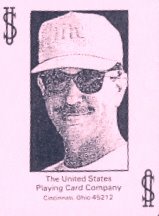 |
| Satchel Paige as a Cleveland Indian |
With another Major League Baseball season about to get underway and the local team, the Richmond Flying Squirrels,
about to open their season on Apr. 4 at the
Diamond, I can’t help but think of what was a temple of baseball in my
youth, Parker Field, which was located where the Diamond is now.
Parker Field opened in 1954 to serve as home for a new International League club — the Richmond Virginians. The Baltimore Orioles (formerly the St. Louis Browns) joined the American League that year, leaving an opening in the IL for the Richmond entry.
As the V’s became one of the New York Yankees’ Triple A farm clubs, in those days the Bronx Bombers paid Richmond an annual visit in April. Just before Major League Baseball’s opening day, Mickey Mantle, Yogi Berra, Whitey Ford and the other great Yankees of that era played an exhibition game in Richmond against V’s.
It was always a standing-room-only affair.
Other than the pinstripe-clad hometown V’s my favorite club of the IL then was the pre-revolution Havana Sugar Kings. They played with an intensity, bordering on reckless abandon that made them a lot of fun to watch, especially for the kids.
One of my all-time favorite players I saw pitch at Parker Field was Leroy “Satchel” Paige (1906-82). Yes, the legendary Paige, with his windmill windup, high kick and remarkably smooth release still working for him, plied his craft on the mound here in Richmond to the delight and other reactions of local baseball fans.
In 1971, Paige (pictured above, circa 1949) was the first of the Negro Leagues’ great stars to be admitted to Major League Baseball’s Hall of Fame, based mostly on his contributions before he helped break the Major League color line in 1948, as a 42-year-old rookie. The statistics from his pre-Big League days are mind-boggling. It's been said he won some 2,000 games and threw maybe as many as 45 no-hitters.
Furthermore, long before the impish poet/boxer Muhammad Ali, there was the equally playful Satchel Paige, with his widely published Six Guidelines to Success:
- Avoid fried meats that angry up the blood.
- If your stomach disputes you, lie down and pacify it with cool thoughts.
- Keep the juices flowing by jangling gently as you walk.
- Go very lightly on the vices, such as carrying-on in society - the society ramble ain’t restful.
- Avoid running at all times.
- Don’t look back, something may be gaining on you.
In the late-1950s live professional baseball in Richmond was mostly a white guys’ scene. Which meant the boos would start as soon as the crowd noticed Paige’s 6-3, 180-pound frame warming up in the middle of a game. When he’d be called in to pitch, in relief, the noise level would soar. Not all the grown men booed, but many did. That, while their children and grandchildren were split between booing, cheering, or embarrassed and not knowing what to do.
Naturally, some of the kids liked seeing the grownups getting unraveled, so Paige was all the more cool to them. Sadly, for some white men in Richmond, then caught up by the thinking that buoyed Massive Resistance, any prominent black person was seen as someone to be against. So, they probably would have booed Duke Ellington or A. Philip Randolph, too.
The showman Paige would take forever to walk to the mound from the bullpen. His warm-up pitches would each be big productions, with various slow-motion full windups. Then the thrown ball would whistle toward home plate with a startling velocity, making some of the kids cheer and laugh ... to mix with the boos.
Paige, from Mobile, Alabama, must have understood what was going on better than most who watched him pitch then. He was a veteran performer, who knew perfectly well there wasn’t much he could do to change the boos; they were coming from folks trapped in the past.
So, Paige played to the cheers, as experience over time had taught him to do.
Of course, as a 10-year-old I lacked the overview that what I was seeing was an aspect of the changes the South was going through, to do with race.
My guess is few knew the reaction to Paige, largely being split on generational lines then, was a sign of how America’s baseball fans were going to change -- one day Jim Crow attitudes would have no place at baseball temples.
Now, with the benefit of decades of
reflection, I understand that Satchel Paige was a visionary. He was
seeing the future by following his own advice -- Don’t look back.
– Images from satchelpage.com










